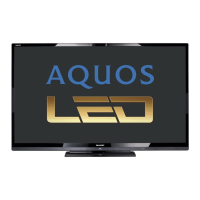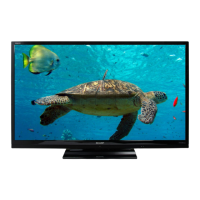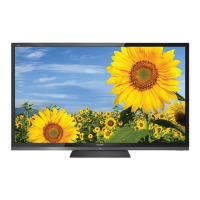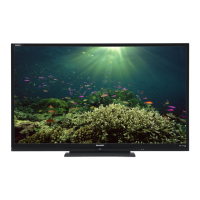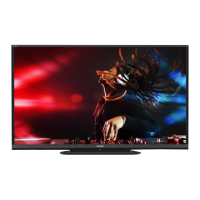Connecting to External Equipment
Refer to page 56 for a list of PC signals compatible with the TV.
[] When using HDMI cable (HDMI 1, 2, 3 or 4}:
HDMI-certified cable
Back panel
vertical in _uts
I _2/ 14£Jrnl I
I c5, _.i_231_Ir1| I
• Depending on the board, only video signals may be output. In this case, in addition to connecting an HDMI-certified cable
to the HDMI 1 terminal, connect a © 3.5 mm stereo minijack cable to the AUDIO IN terminal and set "Audio Select" to
"HDMl+Analog". (See page 56.)
The HDMI terminals only support digital signal.
[] When using DVI=HDMI conversion cable (HDMI 1}: Back panel
horizontal inputs
t_ t ® 3.5 mm stereo minijack cable ==_,_
_=[ Back panel
vertical inputs
DVI-HDMI conversion cable _ _
When using a DVI-HDMI conversion cable, you should make an analog audio connection. In this case, in addition to
connecting a DVI-HDMI conversion cable to the HDMI 1 terminal, connect a Q 3.5 mm stereo minijack cable to the AUDIO IN
terminal and set "Audio Select" to "HDMl+Analog". (See page 56.)
[] When using analog RGB cable (PC IN):
Analog RGB cable
(D-sub 15-pin cable or VGA c _ble)
Back panel surface inputs
÷
LC=60LE632U
===_========_
'" I_ ® 3.5 mm stereo minijack cable ®
•-,,
Back panel horizontal inputs
When using an analog RGB cable, input the audio signal to the AUDIO IN terminal of PC IN.
When connecting a PC to the PC IN, set "Audio Select" to "Video+Audio". (See page 56.)
Q-16
LC=70LE732U

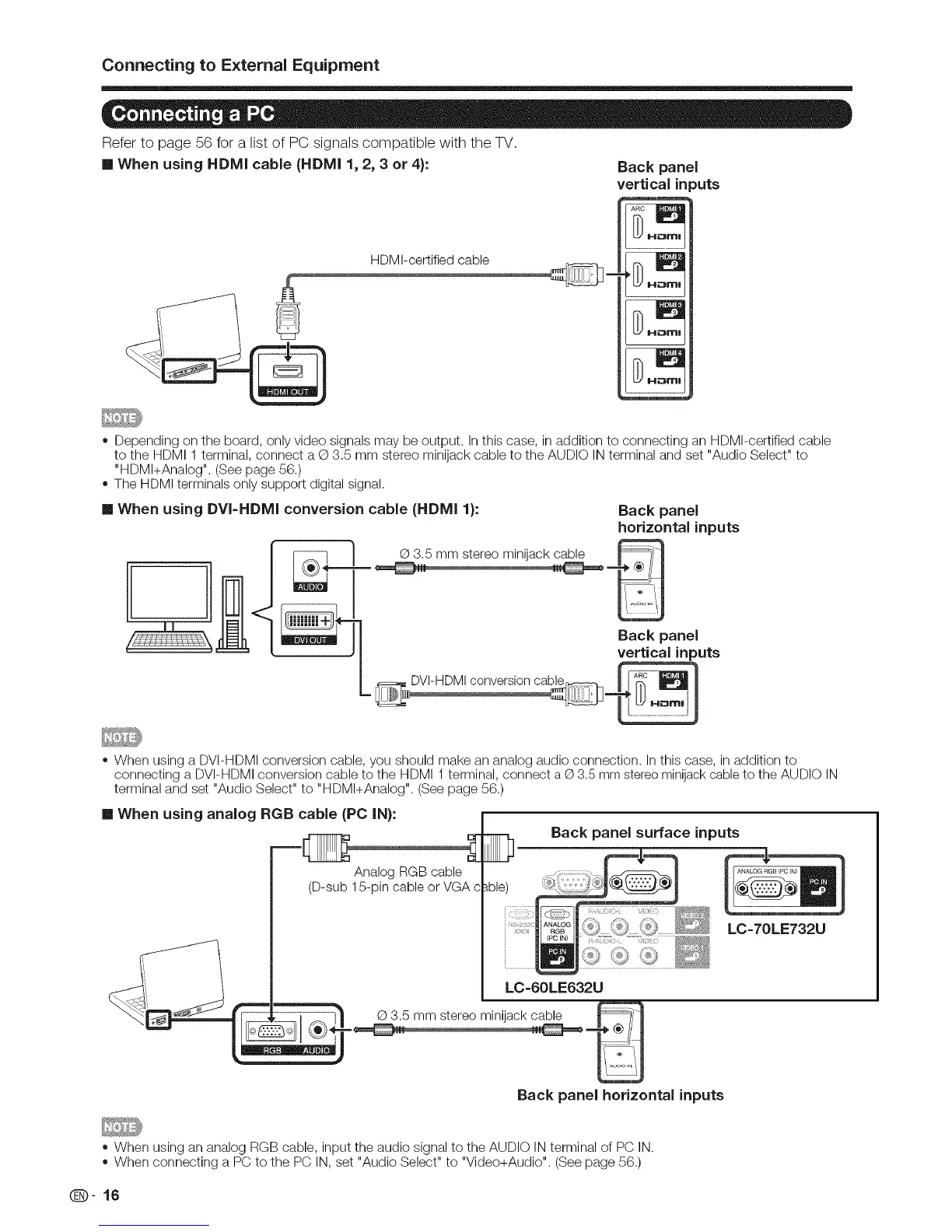